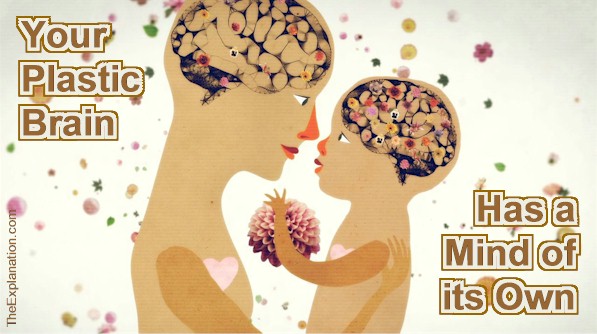Contents
Your plastic brain is continually acquiring new knowledge and sensations. It never stops modifying its neuronal pathways. It has a mind of its own.

Your plastic brain is continually acquiring new knowledge and sensations. It never stops modifying its neuronal pathways. It has a mind of its own.
Someone in the group is playing a piano. She can’t help herself, since she has been imagining getting back to the piano and teaching her students. She says she’s “wired” to play the piano. According to scientists, this statement might be correct. With deeper studies into the workings of the brain, scientists have come to understand a principle that wasn’t obvious.
(chapter 9.4)
Galacti sums it up: the brain is always changing. Since every single action, movement, idea, and thought that passes through the plastic brain reinforces, enfeebles, and/or modifies the neuron networks formed by dendrite-axon combinations, these network maps are never static.
As our piano player decides to improvise and perform a riff, the network maps are perpetually shifting, changing like a melody to reflect whatever she is at any given moment.
Galacti mentions a concept we may have heard about: The brain is “plastic” and can change structure and functionality. Remember the anatomical model of a human skeleton? We saw that our adult skeletons have approximately 206 bones.
The children’s song about “the leg bone” being “connected to the thigh bone” tells us that the 206 bones connect to each other at their extremities for the entirety of our lives. In contrast, the dendrite-axon combinations change their length, width, and accessibility from minute to minute.
Imagine our network of possible neuronal circuits switching partner connections, creating new connections, and pruning defunct connections.
The brain’s jellylike substance gives clues as to its changeability: it has a “mind of its own.” We’ll explore more about the mind shortly. As you think about this future topic, your plastic brain is ever and always in action. It is a dynamic headquarters made up of tens of thousands of different specialized living organisms. Fortunately! It adapts itself every second of your life to keep you running, thinking, or whatever you are doing without interruption.
Whether I’m getting out of the full body scan or our piano player is plucking out Chopin, all mental and physical activities call on the brain to activate our physical senses as well as our mental prowess such as paying attention, memorization of keystrokes, and calculation.
If we consult a brain expert to learn about brain fitness, or if we’re engaged in some activity, our brains are doing aerobics. The brain and mind experts know that the more of a workout our plastic brain gets, the better shape we will be in, even after a traumatic injury.
Imagine: physical and mental exercise therapy can stimulate and rebuild the brain’s fundamental abilities following a concussion or stroke, for example. Both physical and mental exercise therapy help a stroke victim bodily and psychologically.
It helps reconstruct and extend physical functions such as language and movement, as well as cognitive functions such as memory and comprehension. Healing occurs as areas of our resilient, plastic brain take over from the areas wounded by stroke. Subsequently, the plastic brain self-repairs and rehabilitates.
Our piano player with years of practice under her belt could recover from a stroke through practicing the piano. She has developed the habit of playing, and by continuing to play, she could form alternative neural pathways in the brain. There have been documented cases of piano players with brain injury recovering through playing an instrument.
This post is an excerpt from chapter 9.4 of Inventory of the Universe.
The Explanation Blog Bonus
Great explanation of what your brain gives you every day: the gift of neural plasticity — How your brain changes continually at the cellular level every second you learn.
This video reveals the incredible plasticity of the motor cortex – the growth and pruning of synaptic connections when you learn a new skill.
Dig Deeper into The Explanation
Join The Explanation Newsletter to stay informed of updates. and future events. No obligations, total privacy, unsubscribe anytime, if you want.
Online Study Courses to Unlock Bible meaning via Biblical Hebrew… with no fuss. Free video courses that put you in the driver’s seat to navigate the Bible as never before. Join now
The Explanation series of seven books. Free to read online or purchase these valuable commentaries on Genesis 1-3 from your favorite book outlet. E-book and paperback formats are available. Use this link to see the details of each book and buy from your favorite store.
Since you read all the way to here… you liked it. Please use the Social Network links just below to share this information from The Explanation, Your Plastic Brain is Changing Constantly – It has a Mind of Its Own


